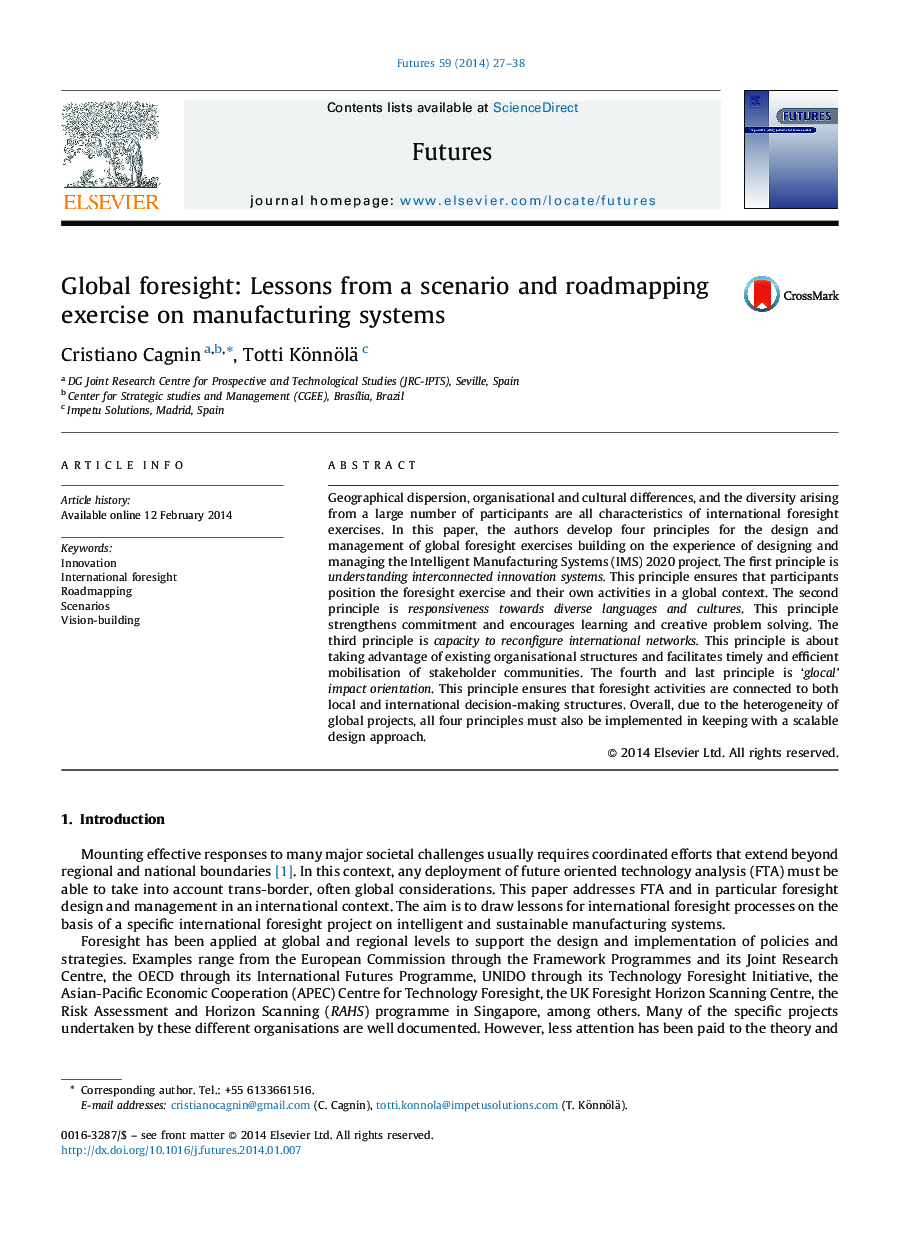| Article ID | Journal | Published Year | Pages | File Type |
|---|---|---|---|---|
| 1015532 | Futures | 2014 | 12 Pages |
•Geographical dispersion, organisational and cultural differences, and diversity are characteristics of international foresight exercises.•Four principles for the design and management of global foresight exercises are developed.•Due to the heterogeneity of global projects all four principles must be implemented in keeping with a scalable design approach.•Interconnected innovation systems; diverse languages and cultures; international networks; ‘glocal’ impact orientation.
Geographical dispersion, organisational and cultural differences, and the diversity arising from a large number of participants are all characteristics of international foresight exercises. In this paper, the authors develop four principles for the design and management of global foresight exercises building on the experience of designing and managing the Intelligent Manufacturing Systems (IMS) 2020 project. The first principle is understanding interconnected innovation systems. This principle ensures that participants position the foresight exercise and their own activities in a global context. The second principle is responsiveness towards diverse languages and cultures. This principle strengthens commitment and encourages learning and creative problem solving. The third principle is capacity to reconfigure international networks. This principle is about taking advantage of existing organisational structures and facilitates timely and efficient mobilisation of stakeholder communities. The fourth and last principle is ‘glocal’ impact orientation. This principle ensures that foresight activities are connected to both local and international decision-making structures. Overall, due to the heterogeneity of global projects, all four principles must also be implemented in keeping with a scalable design approach.
